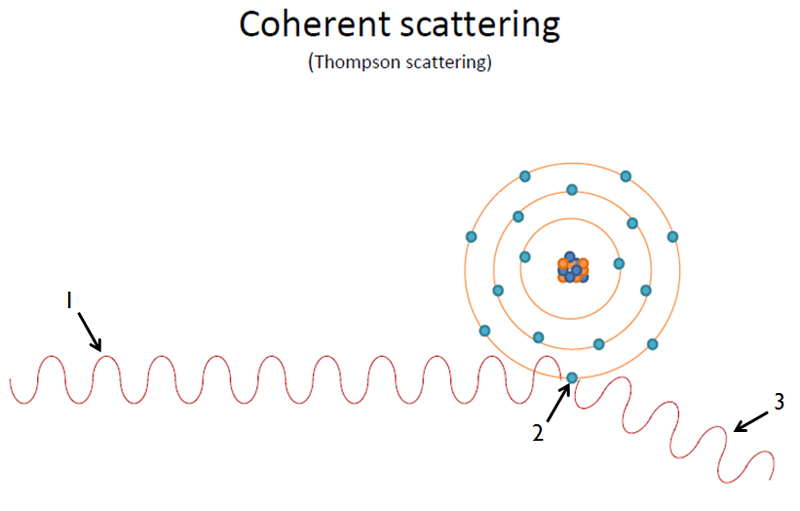This post is the first of three involving methods of attenuation. The first two posts will be on types of scatter; coherent scatter and compton scatter. The last post will be on absorption; photoelectric effect. These are physics topics and more likely apply to students as they are learning about x rays; however as a practitioner feel free to review the material and learn/remind yourself how x rays interact within your patients tissues.
Coherent scatter (or Thompson scatter)
There are three main steps in coherent scatter.
1. An incoming x ray photon with less than 10 keV (so a very low energy x ray photon) interacts with an outer orbital electron.
2. The incoming x ray photon transfers ALL of its energy to the outer orbital electron. The incoming x ray photon no longer exists after transferring its energy. This makes the outer orbital electron excited.
3. The outer orbital electron gives off the excess energy (in the form of an x ray photon) in a different direction than the original incoming x ray photon. The new x ray photon has the same energy as the incoming x ray photon.
 Should you have any questions about this, please let me know. Thanks and enjoy!
Should you have any questions about this, please let me know. Thanks and enjoy!
Next week: Compton scatter

Nice and clear explanation! Thank you!